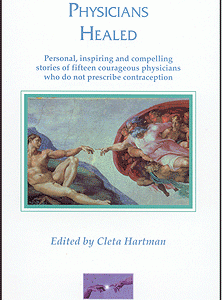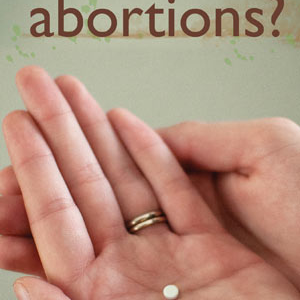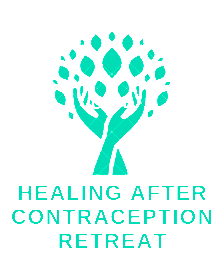What every woman needs to know
What is an IUD?
An Intrauterine Device (IUD) is a small object that is placed inside a woman’s uterus (womb) for the purpose of preventing or interrupting pregnancy. IUDs are considered to be long acting reversible methods of contraception (LARC).1
Currently, there are two kinds of IUDs available in the United States: the Copper-T IUD, made from plastic and copper, and the levonorgestrel intrauterine system (IUS), a plastic device that releases hormones.
Is an IUD 100% effective?
No. The copper-T IUD has a clinical pregnancy rate of 0.8 per 100 women each year, and the IUS has a rate of 0.2 per 100 women each year.2,3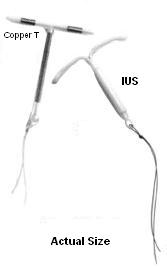
How does an IUD work?
IUDs work against pregnancy in several ways. Some of these effects take place before fertilization, and others take place after the sperm and egg have united to form a new human being.
Both the copper-T and the IUS irritate the inner lining of the womb, causing inflammation.4 This is the same reaction the body has to any foreign object, such as a splinter under the skin. In the reproductive system, inflammation causes some cells to attack and destroy sperm, ova, and any newly formed embryo.
The copper-T IUD also releases copper continuously into the inside of the womb, and the copper spreads into the part of the Fallopian tubes near the womb. This copper can directly poison the ovum or the sperm. If fertilization occurs, the copper can also poison the embryo while it is still in the Fallopian tube, thus causing destruction of a new human life.4
The IUS releases a synthetic hormone (progestin) that has several effects in the female reproductive system. In each normal cycle, the womb builds up tissue and chemicals that help with sperm survival and movement and also support implantation (the process by which a new embryo attaches to the womb to obtain nourishment to sustain life). The hormones released by the IUS (a) make the lining of the womb thinner so that sperm do not survive or move as well and, if fertilization occurs, the new embryo usually cannot implant in the mother’s womb,5 (b) can thicken the cervical mucus, reducing sperm movement and vitality, and (c) cause a small reduction in ovulation (about 15%). The new IUS with lower doses of progestin are unable to stop ovulation.6
Do the IUD and IUS cause abortion?
Using mathematical models, it has been estimated that a woman using the IUD will have from about 0.2 to 1.8 abortions (destruction of a new human life) per year caused specifically by the IUD/IUS.4
What are the risks from using an IUS?
- Embedment7
- Expulsion
- Ovarian Cysts
- Uterine/vaginal bleeding (occurs in 1 of 10 users)
- Long-term effects and congenital anomalies (if pregnancy occurs)
- Perforation (happens in 1 of 1,000 insertions)10
- According to the FDA more than 45,000 adverse effects have been reported by users of the IUS including expulsion, device dislocation and vaginal hemorrhage.11
- Infection
What are the risks from using a Copper-T IUD?
- Uterus perforation
- Bladder perforation
- Spontaneous abortion
- Septic abortion
- Heavy bleeding
- Ectopic pregnancy8
- Pelvic inflammatory disease9
- Permanent sterility
- Allergy to copper
- Copper toxicity
- Anemia
- Backache
Warning! The IUD does NOT protect against sexually transmitted infections, including AIDS.
Does an IUD have a permanent effect on a woman’s fertility?
The synthetic hormone in the IUS can cause a delay in the return of menstruation and fertility after it is removed.
If perforation or pelvic infection occurs while using the IUD, the uterus or Fallopian tubes may become damaged, thus reducing the possibility of pregnancy.
In cases of perforation of the uterus, a hysterectomy (removal of the uterus) may be required, resulting in permanent sterility.
What are my options?
If you are single, abstinence is the best option and always works!
If you are married, the modern methods of Natural Family Planning (NFP) are the safest, healthiest, and least expensive approaches to family planning.
References
1. Retrieved from http://www.acog.org/Patients/FAQs/Long-Acting-Reversible-Contraception-LARC-IUD-and-Implant February 6, 2015.
2. Retrieved from http://www.cdc.gov/reproductivehealth/unintendedpregnancy/contraception.htm#Intrauterine-Contraception-IUD-IUS February 2, 2015.
3. Nelson A, Apter D, Hauck B, Schmelter T, Rybowski S, Rosen K, and Gemzell-Danielsson K. Two low-dose levonorgestrel intrauterine contraceptive systems: a randomized controlled trial. Obstet.Gynecol. 2013; 122(6): 1205-1213.
4. Stanford J MD MSPH. Mechanism of action of intrauterine devices: Update and estimation of post-fertilization effects. Am J Obstet Gynecol. December 2002; 187(6).
5. Ortiz ME, Croxatto HB.Copper T intrauterine device and olevonorgestrel intrauterine system: biological bases of their mechanism of action. Contraception 2007; 75: S42-S51.
6. Apter D, Gemzell-Danielsson K, Hauck B, Rosen K, Zurth C. Pharmacokinetics of two low-dose levonorgestrel-releasing intrauterine systems and effects on ovulation rate and cervical function: pooled analyses of phase II and III studies. Fertil Steril 2014 Jun;101(6): 1656-62.e1-4.
7. http://www.fda.gov/safety/medwatch/safetyinformation/safety-relateddruglabelingchanges/ucm121936.htm
8. Heinemann K, Reed S, and Moehner S. Ectopic Pregnancies under IUD use: Interim results from the EURAS-IUD study. Pharmacoepidemiology and Drug Safety 2013; 22(1): 430.
9. Sufrin CB, Postlethwaite D, Armstrong MA, Merchant M, Wendt JM, and Steinauer JE. Neisseria gonorrhea and Chlamydia trachomatis screening at intrauterine device insertion and pelvic inflammatory disease. Obstetrics & Gynecology 2012; 120(6):1314-1321.
10.Van Grootheest K, Sachs B, Harrison-Woolrych M, Caduff-Janosa P, and van Puijenbroek E. Uterine perforation with the levonorgestrel-releasing intrauterine device: analysis of reports from four national pharmacovigilance centres. Drug Safety 1-1-2011; 34(1): 83-88.
11. Retrieved from http://www.drugwatch.com/mirena/lawsuit/ February 6, 2015.
Where can I learn more about Natural Family Planning?
Billings Ovulation Method Assn. (USA)
(651) 699-8139 www.boma-usa.org
The Couple to Couple League
(800) 745-8252 www.ccli.org
Family of the Americas Foundation
(800) 443-3395 www.familyplanning.net
FertilityCare Centers of America
(402) 390-6600, ext. 117 www.fertilitycare.org
Marquette University Institute for NFP
(414) 288-3854 www.mu.edu/nursing/NFP
Natural Family Planning International
(740) 457-9663 www.nfpandmore.org
Northwest Family Services
(503) 215-6377 www.nwfs.org/couples-a-singles/natural-family-planning.html
United States Conference of Catholic Bishops
(202) 541-3040 www.usccb.org/issues-and-action/marriage-and-family/natural-family-planning/
One More Soul
(800) 307-7685 www.onemoresoul.com
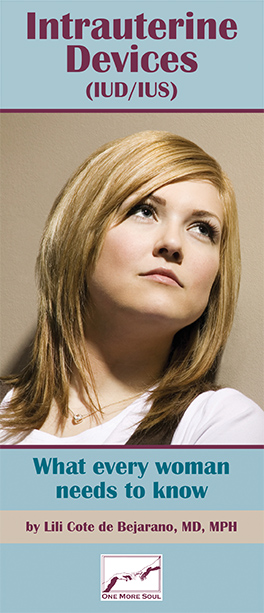
Intrauterine Devices (IUD/IUS)
Myths and truths that every woman should know about the IUD/IUS
